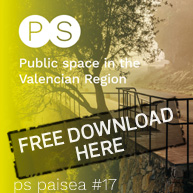IFLA Student Landscape Architecture Design Competition Landscapes in Transition: Creative landscapes transforming lives in the 49th IFLA World Congress will come to Africa in 2012 in Cape Town, South Africa, 5-7th September.
The transformative power of landscape design in cities has raised the awareness of the value of landscape architecture in creating living environments which satisfy a wide spectrum of the qualities needed for meaningful urban living.
This student landscape architecture competition aims to achieve the following:
– Generate new ideas about how creative landscape design significantly transforms lives in a variety of ways (directly and / or indirectly).
– Increase the awareness of the various benefits that innovative and strategic landscape design holds for cities and towns.
Assignment:
Identify a problematic area in your city or town (or any city or town of your choice) with rich social and cultural heritage which presents opportunities for transformation. Design the transformation of the area through the creative and strategic application of landscape systems and / or landscape infrastructure for the purpose of not only improving peoples’ lives, but simultaneously maximising the development of cultural identity. The social and visual aspects are of particular note, in the way that service delivery can be utilised as a catalyst for transforming environments into vibrant, meaningful and delightful urban places.
The design should respond to, embrace or express the following:
– The social and cultural facets of landscape not only reside in the tangible, but to a great degree the intangible. The comprehensive transformation of lives through landscape systems and / or infrastructural interventions involves understanding the possibilities of the social and cultural effects of such interventions.
– Social and cultural phenomena (as well as strategic, creative landscape interventions) often require innovation in representation techniques for effective communication (especially to people who are not necessarily designers).
– Regarding existing contextual phenomena, the emphasis should not only be on analysis, but rather the strategic, creative and / or innovative translation into design.
– Economy of means (thrift in design); however not necessarily with the emphasis on minimal intervention, but rather on maximum return on landscape ‘investment’ in a diversity of ways.
– Infrastructure provision (service delivery) can be utilised for far more than just meeting people’s basic needs, but with creative and strategic thinking can be a powerful tool for social, economic , ecological and significant visual transformation of places (landscape as an agent for capacity development).
– Strategic, gradual (yet significant) transformation of environments in a world with diminishing available capital and resources is becoming an increasingly appropriate approach (managing the transformation of landscapes towards a more sustainable future).
The specific scale of intervention/s is not specified, however the posters should illustrate the proposed design at conceptual, precinct / district, and detail levels. Decision-making (approaches, principles, strategies etc.) should also be apparent, and not only analysis and product.
Product format:
The final product when printed at 100% size must comprise of three (3) A1 portrait posters (each measuring exactly 841mm x 594mm). The posters will be displayed next to each other with a 20mm gap between. Entrants must also submit a brief (250 word maximum) summary of the project, for potential use in the jury report or subsequent publications. All submissions must be entirely in English, which is the official language of IFLA.
Awards:
1st Prize – Group Han Prize for Landscape Architecture – $ 3,500 USD
2nd Prize – IFLA Zvi Miller Prize – $ 2,500 USD
3rd Prize – Merit Award Prize – $ 1,000 USD
Eligibility:
The competition is open to all students of landscape architecture (or students studying a course in landscape architecture at a university where there is no degree specifically identified as landscape architecture). Both individual and group submissions will be accepted, and each student or group is permitted only one entry. Groups may include members from other disciplines, however groups up to 3 members must have a minimum of 1 landscape architecture student, and groups of 4 or 5 members must have a minimum of 2 landscape architecture students). Broad interdisciplinary submissions are also welcome; however the design must still focus on the configuration of landscape. The number of members in each participating group shall not exceed five (5). Qualified landscape architects, professional collaborators and associates of members of the jury, and their relatives may not enter the competition.
Deadlines:
Entries submitted by 31 June 2012
Adjudication 3-4 September 2012
Awards presentation 5-7 September 2012












